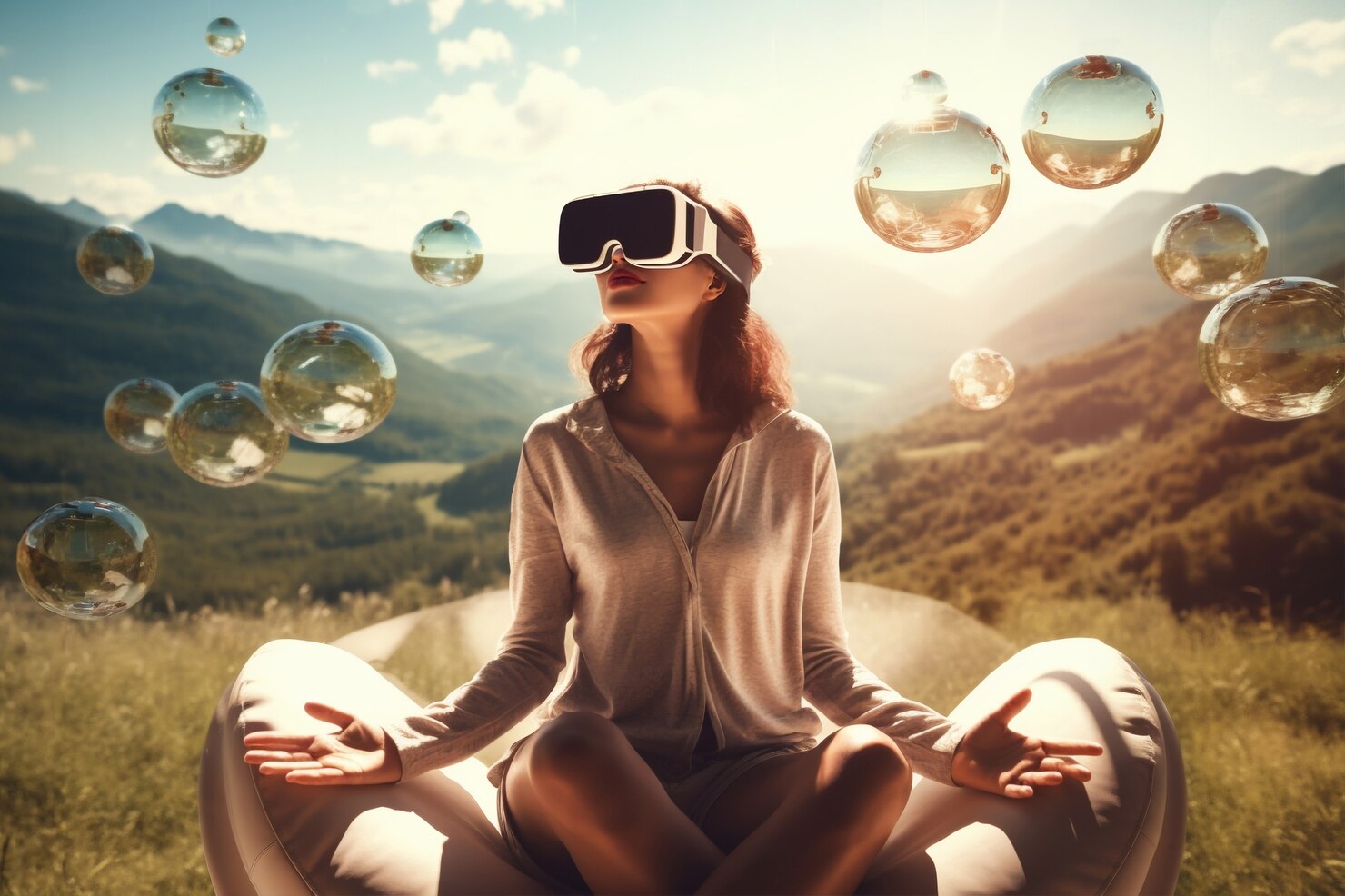
With an estimated lifetime prevalence of 29.2% worldwide, mental disorders constitute a major source of suffering and burden for society. WHO estimates that 5% of adults worldwide suffer from depression.
In addition, around 4% of the global population currently experience an anxiety disorder. The need for treatment is still far from being satisfied despite this. For example, estimates of the proportion of persons with mental disorders who do not receive treatment range from 76.3% to 85.4% in less developed countries to 35.5% to 50.3% in developed countries. Barriers to care include lack of awareness that this is a treatable health condition, lack of investment in mental health services, lack of trained health care providers, and social stigma.
To mitigate cost increases while expanding access to evidence-based treatments, great effort is currently put into the development of new e-health technologies, such as virtual reality (VR). VR has proven to be a powerful tool to help people overcome many mental health issues including phobias, anxiety, post-traumatic stress disorders (PTSD), and depression as it aims to mirror reality and create a world that is both immersive and interactive.
The VR in Therapy market industry is projected to grow from USD 1.06 Billion in 2023 to USD 10.13 Billion by 2032, exhibiting a compound annual growth rate (CAGR) of 32.60% during the forecast period (2023-2032).
The Science behind VR therapy: Feeling Real
When someone goes through a traumatic event, reacting to sights, sounds, or other things that trigger strong feelings of fear is natural. Through virtual reality, you can expose yourself to triggers and face your fear in a secure setting.
This lets you reframe your thoughts about the traumatic event and learn coping mechanisms for anxiety, just like with traditional prolonged exposure therapy. This may lead to a gradual acclimatization to the triggers and acceptance of the experience. Your stress reactions to triggers will gradually lessen in intensity.
Researchers have explored the intricacies of phobias, PTSD, stress alleviation, depression, mindfulness, and distress management within virtual environments. These studies, numbering in the thousands, stand as a testament to the thorough exploration of this revolutionary technology’s capabilities.
Empowering Mental Health: Evidence in Action
As newer studies are being conducted each passing day, let’s see how VR has aided in the management of mental health issues with its array of therapeutic interventions.
Immersive Exposure Therapy: Overcoming Phobias and PTSD
Immersion exposure therapy, which entails progressively confronting and conquering fears or anxieties in a controlled manner, is the fundamental idea behind VR therapy. Because the VR environment can be tailored to the individual and their needs, VR exposure therapy has been shown to be beneficial in helping people with PTSD.
A notable study that was published in the Journal of Anxiety Disorders highlighted the extraordinary effectiveness of VR exposure therapy in reducing symptoms of PTSD. VR environment’s controlled and immersive qualities have proven to be a crucial benefit, enabling people to confront their traumatic experiences in a safe and encouraging virtual space.
A notable instance of virtual reality’s impact is the “Bravemind” VR therapy system, an invention praised for its significant impact on soldiers managing PTSD. The results of using “Bravemind” for visual, auditory, and olfactory cues for trauma treatment were published in the Journal of Anxiety Disorders, and they demonstrated the ability to elicit noticeable improvements in soldiers’ lives.
Neuroplasticity and Cognitive Restructuring: A World of Relief
VR therapy makes use of neuroplasticity, the brain’s extraordinary capacity for self-organization. People who are exposed to virtual environments and stimuli see changes in their brains that are adaptive to their experiences. This may result in cognitive restructuring, a process whereby unhealthy, pessimistic thought patterns that are linked to anxiety and depression are progressively replaced. For treating anxiety and fear, virtual reality exposure therapy, or VRET, is thought to be a useful and successful intervention.
A study published in the Harvard Reviews of Psychiatry has revealed how VRET systems facilitate emotional processing by immersing the patient in a tailored environment specific to their fear structures with great success.
Biofeedback and Physiological Monitoring: Tailoring Anxiety and Building Confidence Virtually
With VR therapy, therapists can watch and assess a patient’s physiological responses in real time via sensors and monitoring devices. This includes skin conductance, heart rate, and other physiological markers of stress and anxiety. This information not only gives therapists important information about a patient’s emotional state but also enables them to modify interventions in response to real-time feedback, which improves the therapeutic process as a whole.
One breakthrough study published in the Journal of Psychopharmacological Research found that VR systems can induce physiological and psychological responses that can be measured by changes to stress hormones and other biological stress that relate to anxiety.
Enhanced Sense of Presence and Engagement: Battling Depression
The purpose of virtual environments is to improve the relationship between the patient and the therapeutic process. This increased involvement has the potential to have a more significant effect on the person’s mental health as well as greater focus and emotional involvement.
VR is not only regarded as an affordable aid for individuals suffering from anxiety, but continuous studies validate its effectiveness in treating depression as well. A meta-analysis published in Scientific Reports revealed its efficacy as a tool to manage depression where VR interventions outperformed control conditions. In research published in Harvard Reviews of Psychiatry, studies on people suffering from depression demonstrated greater improvement in depressive symptoms and state anger at 6-month follow-up.
Challenges in Implementing VR Therapy for Mental Health
Technical Constraints
The software and hardware availability and technical quality are two of VR’s primary drawbacks. High-performance gear, including computers, controllers, sensors, and headsets, are needed for VR to function properly and without lag, errors, or glitches. These gadgets might not be available or suitable for everyone, and they can be pricey, heavy, or uncomfortable.
Physical and Psychological Risks
The potential for users to experience physical side effects from VR is another drawback. Due to the mismatch between the visual and vestibular inputs, virtual reality (VR) can cause motion sickness, nausea, dizziness, headaches, eye strain, or fatigue.
Virtual reality also carries the potential for psychological hazards. By subjecting users to demanding, frightful, or unpleasant stimuli, virtual reality (VR) has the potential to cause or exacerbate anxiety, phobias, trauma, depression, or other psychological disorders.
Ethical dilemmas
A related limitation of VR is the ethical dilemmas that it can raise for the developers, providers, and users of VR for mental health. In virtual reality (VR), people, places, and events are created and altered in virtual forms that may have moral, legal, or social ramifications. VR has the power to modify a user’s attitude, motivation, and behavior by rewarding, punishing, or persuading them in specific ways.
Future directions: Thoughts and Considerations
VR is still a young, developing technology with a lot of promise and difficulties for applications in mental health. To comprehend and manage the risks and limitations of VR for mental health, further research and development are required as VR becomes more sophisticated, affordable, and accessible. To make this happen,
- Evidence-based and moral VR software that is customized to the user’s condition, symptoms, and goals needs to be developed, and VR devices and software’s technical quality and usability need to be improved.
- Thorough research on the safety and efficacy of VR for mental health across a range of demographics, environments, and modalities is also required.
- Lastly, to safeguard the rights and interests of all parties involved, precise, uniform rules and regulations governing the use of VR for mental health must be developed.
Wrapping it Up
The power of VR for mental health support is undeniable, countless studies are validating its use for treating traumas or phobias or teaching meditative and mindful skills as we do with Codewave EIT. But, it’s crucial to think about the effects of providing your mind with an almost real experience.
The purpose behind these potent experiences is crucial to take into account since we are essentially programming our minds to view the outside world differently based on virtual experiences.
Codewave EIT’s intervention includes:
- Understanding the need for VR
- Designing & architecting immersive experiences
- Designing and developing a rapid prototype to test the solution, with potential users & user groups
- Designing & Developing the solution, for full-scale deployment and active usage
- Reviewing outcomes regularly, and implementing design & technology feedback for continuous improvement of the solution.
If you want to explore the benefits of VR, please feel free to contact our executives and explore our range of innovative solutions for a better future.
